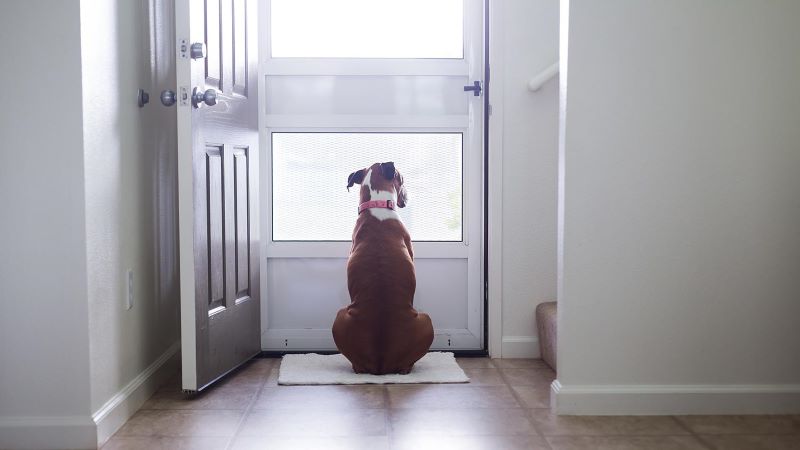You know how it goes. The suitcases come out and the furry children start pacing. Or they just lie on the floor with the big, sad eyes. In the case of my parent’s dog, she insists on being in the car. That way, she cannot be left behind.
What is seperation anxiety in pets?
Separation anxiety. It doesn’t just plague human children, it’s an issue that affects dogs and cats, too. Some dogs may act depressed, destroy the house, or bark non-stop when their owners are away. Cats act out differently, by refusing to eat or drink. However it may manifest itself, separation anxiety is enough to disquiet even the most laid back pet parent. Let’s find out why pets act out when they sense us separating from them, and then talk tips for quelling the behavior that comes along with separation anxiety in our pets so we can get back to enjoying their companionship.
According to Dr. Katy Nelson, petMD Veterinary Expert, anxiety in dogs is the anticipation of future danger, and in the case of separation anxiety, may be a result of past abandonment or poor socialization. Dogs may also experience separation anxiety with changes in guardian, schedule, and/or residence.
Seperation anxiety symptoms in dogs
Separation anxiety can show itself in many ways. Incessant barking, accidents in the house, acting depressed, hiding, whining, and panting are all symptoms of separation anxiety. But it is important to rule out other serious medical conditions as well. If you have noticed your dog displaying any of these behaviors when you are away from him, or he is excessively excited when you return, there are some tips you can try, to help your pet overcome his anxiety.
- Pretend to leave, then return, gradually increasing the time away as long as your dog remains composed. Reward calm behavior with a treat.
- When you arrive home, if your dog is overly excited, ignore him until he calms down.
- Ask someone else to play with your dog, take him for a walk, and/or feed him, so he is used to other people interacting with him, and not totally dependent on you.
- Encourage your dog to look forward to time alone by designating certain toys as “special” ones that he’s only allowed to play with when you are not home with him. When you arrive home, the “special” toys get put away.
- Leave the radio/tv/white noise on so the house is not so still and quiet when you are away.
Establish a routine
When we leave our house, we use a treat to lead our pup into her crate, and then reassure her, “We’ll be right back.” Even though we know she doesn’t understand what “being right back,” means, it is still a calm reassurance that we will return to let her out and spend time with her soon. Since we have always done this, and we do always return, she has less anxiety about being left behind.
Put your pet first
If separation anxiety is a part of life for you and your dog, try a few of these tricks and see if you can nip it in the bud. Being patient and taking the time to train your dog to be comfortable with you leaving is important to help your dog's anxiety. Be sure to speak with your vet about your dog's symptoms to receive professional advice about how to manage your dog's seperation anxiety. Let pet insurance give you peace of mind that you can afford the best veterinary care for your anxious pet without worrying over the cost!

